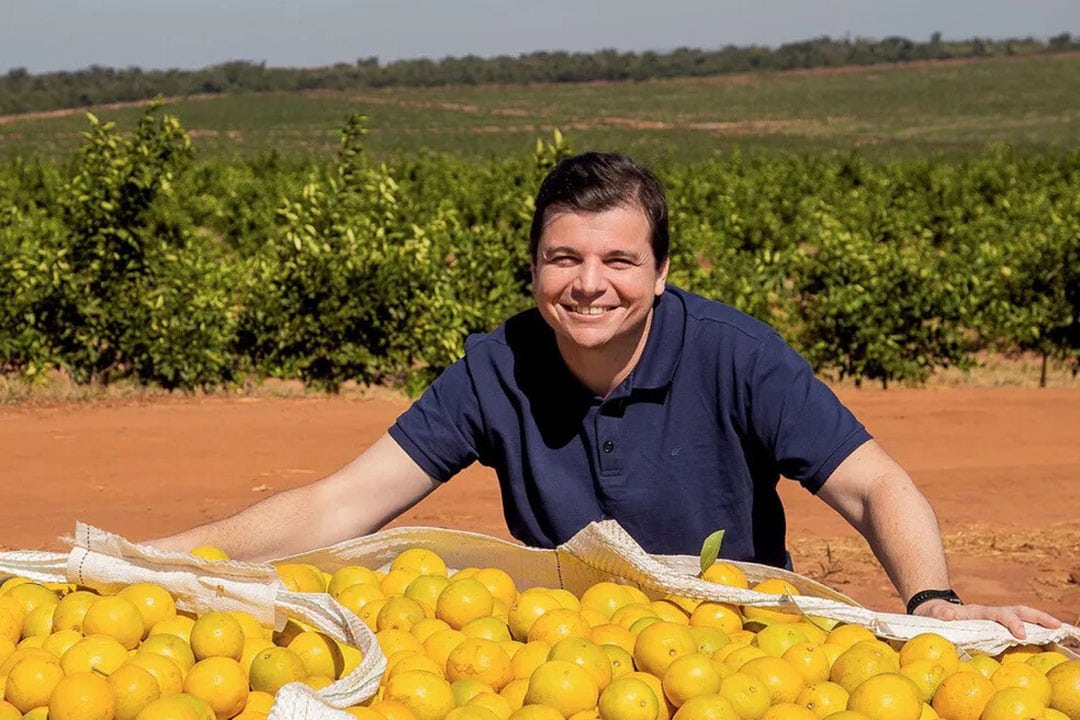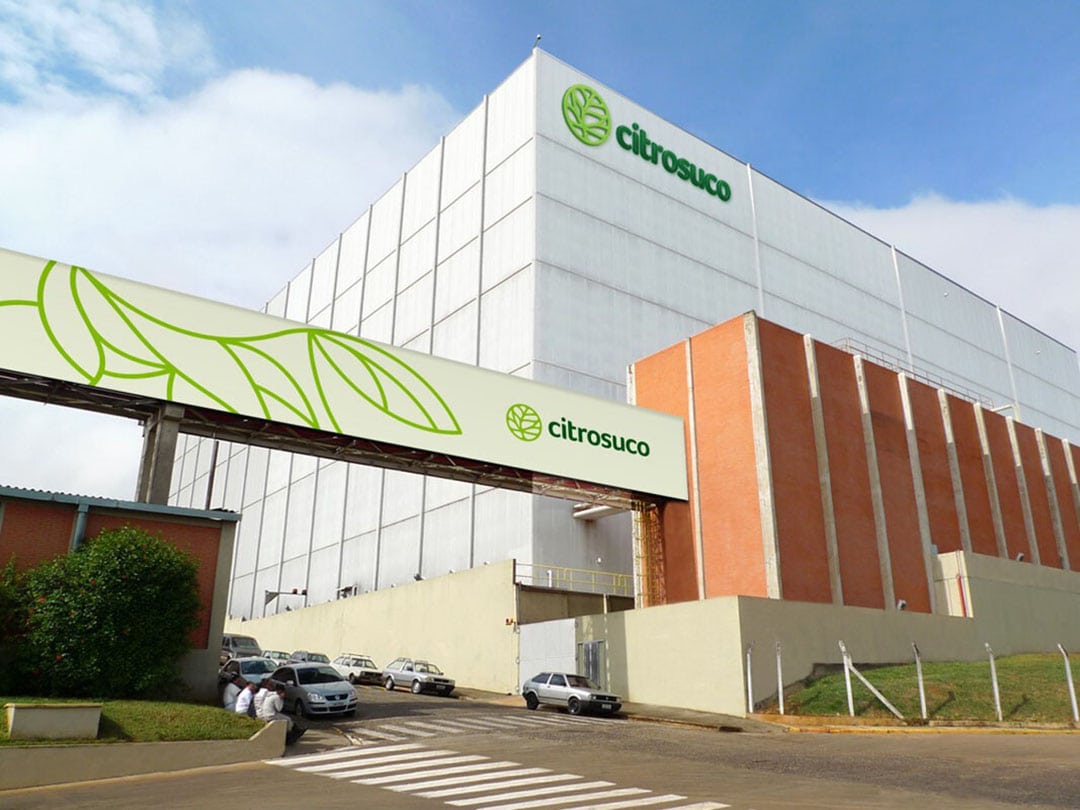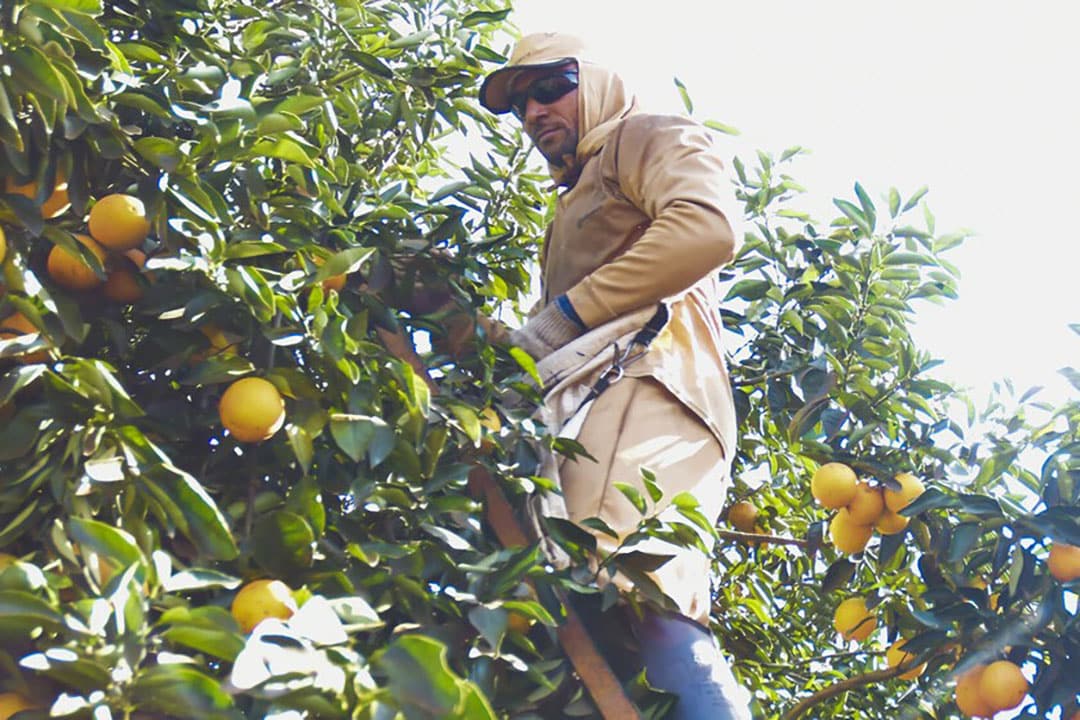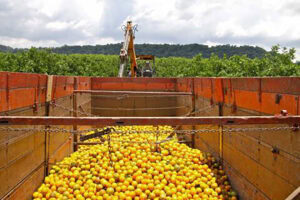AI squeezes 15% more juice from orange orchards

Brazilian orchards currently produce between 6 or 7 of every 10 bottles of orange juice consumed around the globe, and this is due to no other factor than the correct technological choices made by the sector.
The synthesis is by Tomás Dandrea Balistiero, COO of Citrosuco, who points out that machinery, digital management, Artificial intelligence (AI), balance amongst biologicals and chemical inputs, and many other techniques have contributed to this scenario.
‘Innovation must mean results’
Citrosuco is one of the largest orange juice companies in the world, with around 14,000 employees, three industrial units in Brazil, five terminals on different continents, and 25 farms with a total of 80,000 hectares of orange groves.
“Innovation must mean results. By adopting intelligent and efficient solutions, we seek for increasing productivity, and competitiveness and achieve positive impacts not only for the business but also for the planet, using resources more efficiently”, comments Balistiero.
In that sense, the company has a rigorous and efficient process to add new tools and solution. During the last years, for example, its adoption process prioritized drone mapping of 100% of the areas, management digitalization, and telemetry of machinery, drip irrigation, among others.
Text continues below picture

Artificial intelligence in orchards
The company dedicated US$ 40 million to “state-of-the-art” technology for AI and digitalization during the last years.
“Citrosuco is the first company in the citrus sector in the world to be 100% digitized. All farms, industries, and logistic terminals around the world are connected, which allows for the integration of agricultural practices, from the seedling nursery to the delivery of products”, says the executive.
This means that all the group’s farms have 4G antennas, digitalized management processes, and, above all, the development of an AI system for operations.
The potential is to gain up to 15% juice per hectare
The model is able to collect and set all sources of data, for example, environmental indicators from soil, plants, and fruits, climate conditions, and historical data of each field to determine the optimal time for harvesting.
“We predict the optimal window in each area to harvest in order to maximize the available solid in the oranges and produce more juice. The potential is to gain up to 15% juice per hectare. It has a very relevant impact. 2% was good enough”, he reveals.
Each tree is unique
In the case of drones, each orange tree has a unique ID, which makes it possible to individually monitor the conditions of each tree at intervals of a few weeks.
Thus, agronomic interventions can be much more precise and only when necessary. Worthy to mention that orange production needs a high level of control against pests due to its biological features.
Text continues below picture

Telemetry to robotics
In the case of machinery telemetry, the goal is to ensure efficiency in terms of the pace of applications and also coverage of the areas at the right time.
The next step in terms of machinery, already in the testing phase, is autonomous and robotic sprayers. “We already have a series of tests on our farms. Perhaps, in 3 years, robots and autonomous machinery will be more present in production”, he says.
Sectorial evolution
The innovation that led and sustains the segment’s growth continues to advance from pre-competitive research – together with entities such as associations, universities, and Embrapa – to R&D in the industry as well.
“Orange production has one of the most complex management practices in agriculture and, therefore, innovation is a key point. We cannot go wrong, given the greening disease that has no cure. In this sense, data technology, devices, artificial intelligence, and others are fundamental. This has evolved a lot,” he adds.
There is a huge gulf between up-to-date producers and those who still use ‘last century’ practices
However, according to him, there is a huge gulf between up-to-date producers and those who still use “last century” practices. And this is a problem for the sector, both because of the health risk issue and also because of the fact that small producers are also suppliers to industries.
The company, for example, integrates initiatives with Fundecitrus and other entities to encourage technological adoption throughout the sector, but this also depends on the producers themselves, of all sizes.
Currently, the sector produces 314 million boxes of 48 kg per year, employing around 200,000 people in Brazil, and is the sixth most valuable crop in the country with a forecast GDP (Gross Domestic Production) of US$ 5 billion for 2023.
Text continues below picture

Crucial decision
According to Tomas, the most defining technical choice was, still in the 2000s, fighting greening by eliminating or controlling its vector, the psyllid mosquito, and not just bacterial infestation in fruits.
The disease is devastating for orange groves and has destroyed hundreds of thousands of hectares of orchards in North America, Europe, and other continents.
“Without a doubt, fighting the mosquito that vectors greening illness was the most important decision. What happened was that the United States produced 250 million boxes and today it produces 16 million. So, Brazil is the big winner in the process of applying science and management”, he details.
Thus, Brazilian orange producers advanced and conquered more and more space in the global market.
Beneficial insect

In practice, they were able to adopt integrated pest management (IPM) that reconciles both chemical and biological pesticides. In this case, the wasp Tamarixia radiata, the natural enemy of the psyllid Diaphorina citrus, that transmits the bacteria Candidatus Liberibacter spp., which causes greening.
“Citrosuco, for example, produces more than 10 million tamaris – the beneficial insect – in its laboratories and we apply it to our neighbors because it is a disease that does not respect property boundaries. So we have an internal and external control. It made and makes an absolute difference”, he says.
Join 17,000+ subscribers
Subscribe to our newsletter to stay updated about all the need-to-know content in the agricultural sector, two times a week.



